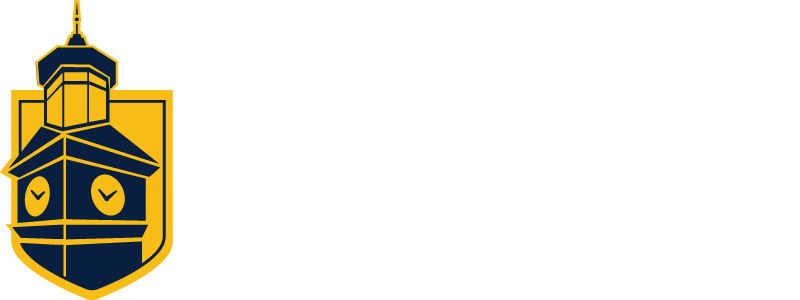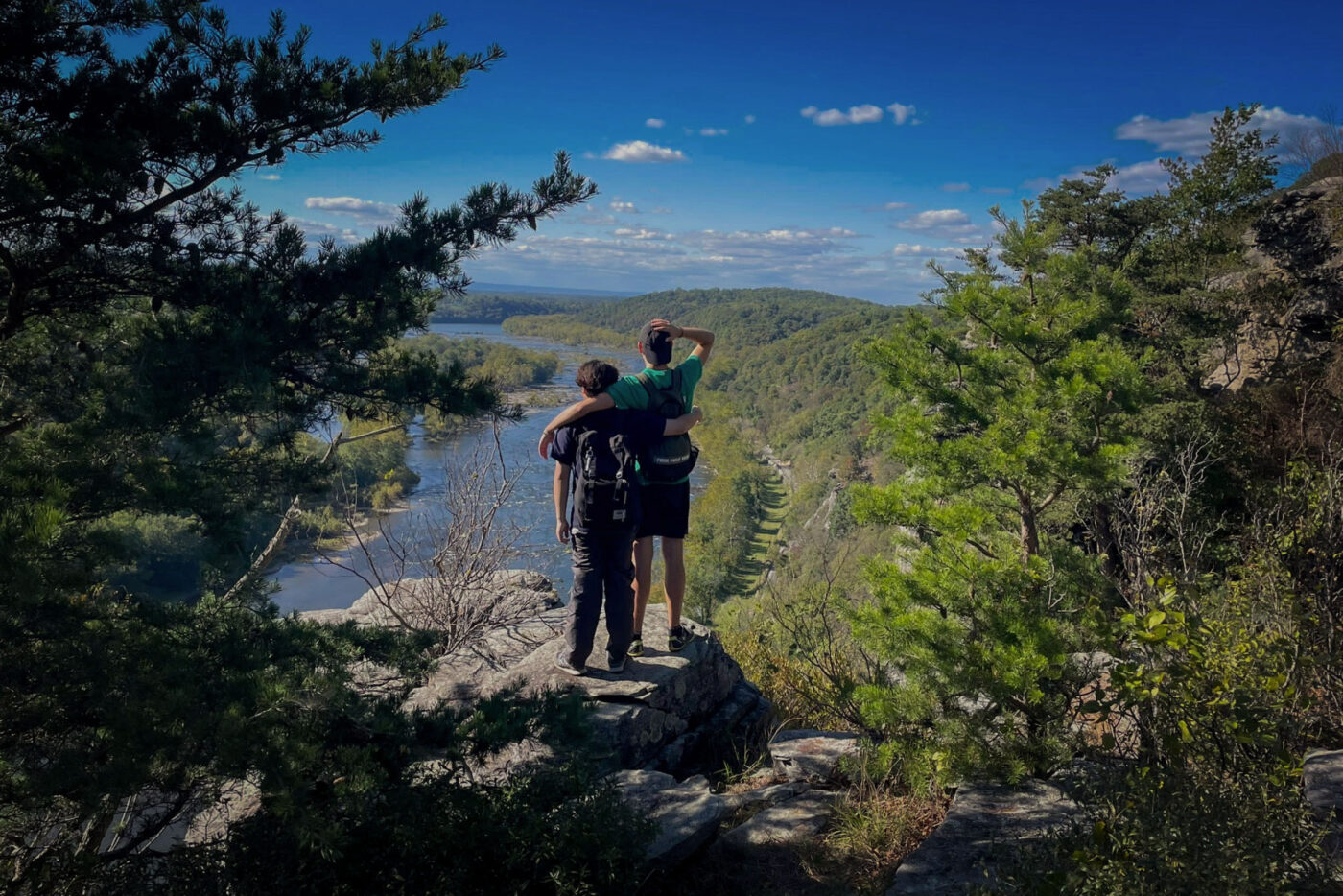From Country Roads to Campus Collaboration
Lessons in International PartnershipThe Beginning
The Search is OnIn 2020, I was asked to explore whether HSMW could develop a partnership with a U.S. university. I started by reaching out to several institutions, hoping for a quick “yes.” Instead, I met polite declines: some universities already had German partners; others lacked the manpower to maintain another collaboration. After months of minimal progress, I decided to follow my instinct. In the end, I returned to the thought that struck me on my very first visit to HSMW’s campus—that it reminded me so strongly of Shepherd University.
There is a saying that resonates deeply with this experience: “We often look to climb the tallest mountains, forgetting that the hill next door offers the same view.” Shepherd, with its small-town charm and intimate campus, felt immediately aligned with HSMW’s values and mission. A single phone call to the International Office at Shepherd University confirmed what I had hoped: they were also seeking a German partner. What followed was the beginning of a partnership built on shared vision, complementary strengths, and mutual commitment to student and faculty engagement.

Nestled along the scenic Potomac River in the lower Shenandoah Valley, Shepherd University is a small campus with its unique blend of historic charm and modern academic rigor. Founded in 1871 as Shepherd College, it has grown from just 42 students to over 80 undergraduate programs and several graduate offerings, including business, teaching, Appalachian studies, and nursing. Shepherd has small class sizes and a very close-knit community which creates an environment where students receive personal attention while still being challenged academically.
Many Germans know the John Denver song “Country Roads”—“Blue Ridge Mountains, Shenandoah River…”—and Shepherd is not far from that iconic landscape. The town of Shepherdstown itself, originally called Mecklenburg and chartered in 1762, still holds its historic architecture and German-named streets. The combination of history, natural beauty, and an engaged academic community made Shepherd, in my mind, an ideal partner. But also for me, the personal connection ran deeper: my parents both attended the university, and childhood visits gave me an early appreciation for the town and campus that I now wanted to share with others. It just felt like a good fit.
Building the Partnership
Collaboration at Its CoreCreating a successful partnership requires more than enthusiasm; it requires collaboration at every level. Initial conversations involved aligning institutional strategies, getting colleagues on board and interested, defining shared goals, and putting this into motion. Let us not forget the patience and time involved. Memoranda of Understanding were signed, working groups formed, and early exchanges planned.
Even small hurdles—time zone differences, misaligned semester schedules, visa requirements—required careful attention and creativity. At times, sustaining momentum felt like the hardest part. Yet every phone call, every online meeting, every face-to-face discussion strengthened the partnership. Most importantly, seeing students arrive shy and uncertain, only to leave energized and culturally aware, reminded me why these efforts are worthwhile.
But what is most important to highlight is that collaboration with colleagues is the backbone of success. Engaging faculty on both sides, coordinating schedules across time zones, and maintaining consistent communication demanded persistence and creativity. The partnership’s growth is a testament to collective effort, highlighting that no individual, no matter how determined, can create meaningful international collaboration alone.
Sustainability Symposium Featuring Speakers from Shepherd University and HSMW
INTERNATIONAL WEEK 2024: Shepherd University: Dr. Brooke Comer and Dr. Peter Vila; HSMW: Prof. Michael Kuhl and Prof. Ulrich BuserInternational partnerships are never seamless. Beyond logistics, differences in teaching styles, academic expectations, and research approaches can create moments of tension. Sustaining engagement over time requires constant attention. Travel costs, bureaucratic approvals, and even political climates add additional layers of complexity. Let us not forget the importance of cultural intelligence in a partnership. The understanding of differences in communication styles, approaches to deadlines, meeting protocols, dealing with misinterpretations, and feedback practices. This is truly essential in building trust and ensuring effective collaboration.
The key lesson is this: solutions do not always produce immediate perfection, but they set the partnership on the right path. Whether it’s a temporary compromise on scheduling, a hybrid online exchange when travel isn’t feasible, or dedicating extra time to align faculty expectations, progress is made through persistence and creativity.
Despite these challenges, the partnership has already yielded meaningful results:
- Student and Group Exchanges
- Faculty Exchanges: Short-term teaching and guest lectures
- Hybrid Events: collaborative online symposium. As well as a guest speaker at the East-West Forum.
- Double Degree Master’s Program in Industrial Management
For students, the impact is profound. Experiencing a new culture, adapting to different teaching methods, and building lifelong friendships develop skills that are invaluable in today’s multicultural workplaces. I’ve seen students transform from hesitant visitors to confident, culturally competent learners. Faculty also benefit, learning new pedagogical approaches, research perspectives, and strengthening their professional networks.
Professional Exchange
Dr. Rachel Kranz from Shepherd University at HSMWProfessional Exchange
Prof. Klaus Vollert from HSMW at Shepherd UniversityHSMW Student
Ilian Zalomai, at Shepherd University CampusHSMW Music Clash
Shepherd Students: Phoenix Herman, Kaelyn Corun and I in Shepherd Hoodies - link to youtube videoWhat I have learned is simple but powerful: international partnerships are about people, not paperwork. They require investment—of time, energy, and trust—but they yield insights and growth that are impossible to achieve alone.
- Start Close to Home: The most meaningful collaborations aren’t always the most prestigious or distant. Familiarity and shared values often provide a stronger foundation.
- Collaboration Matters: Success depends on colleagues who are engaged, committed, and willing to invest in relationships.
- Partnerships Require Attention: Regular communication—face-to-face when possible—is critical. Email alone is never enough.
- Intercultural Competency Is Key: Experiencing other cultures firsthand develops skills and insights that cannot be taught in a classroom alone.
One of the greatest benefits of this partnership is seeing the long-term connections it creates. Friendships made through exchanges often last well beyond a semester, offering students not just memories but a lifelong network that extends across borders. That, in itself, is a gift—HSMW is opening a door to the world, and in doing so, giving students the opportunity. For me, two areas stand out most: first, the chance for students to step outside their comfort zones, to learn, see, explore, and experience the world firsthand; and second, the development of intercultural competency—a skill that is not only desirable but essential.
For many students, this is their very first experience abroad, and the growth they undergo is remarkable. I have seen students arrive anxious and become homesick, some even whispering in the first week, “I think I want to go home.” Yet by the end of their stay, they are overflowing with stories, experiences, and insights—so much so that it is difficult to get a word in during our conversations. Parents often reach out to express their gratitude for the care and opportunities their children received, and I can see firsthand how students flourish both academically and personally. In the classroom, they question stereotypes, break down misconceptions, and engage in conversations that no textbook or lecture could ever fully capture. That kind of awareness, cultural intelligence, and confidence is perhaps the greatest educational gift we can give today’s students—and it makes every challenge along the way worthwhile.
The benefits extend to faculty as well. I once organized an online meeting between professors from HSMW and Shepherd to explore potential collaborations. I had carefully prepared an agenda and discussion points, ready to guide the conversation. To my delight, none of it was needed. The professors immediately connected, sharing their research, asking questions, offering suggestions, and sparking ideas for future projects. My role quickly shifted from facilitator to observer, watching with genuine enjoyment as colleagues from two institutions engaged naturally, discovering common ground and building momentum without any prompting. Moments like this remind me that when I think it is too much work – it really was worth the effort.
Looking Forward
The partnership continues to evolve. Future initiatives include expanding student and faculty exchanges, strengthening the double degree program, possible professional group exchange in 2026, and online lecture collaborations. Even in times of political uncertainty, the partnership reminds us of the original vision: to give students and faculty the opportunity to learn, explore, and experience the world beyond their own borders.
Watching students thrive, share their experiences, and maintain long-term friendships is the greatest affirmation of this work. It’s a reminder that small-town universities can make a global difference—and that meaningful partnerships are built not on proximity alone, but on trust, shared vision, and the willingness to take the first step.
So if you’re thinking about starting a partnership, take the view from the hill, pick up the phone, and see where it takes you.


